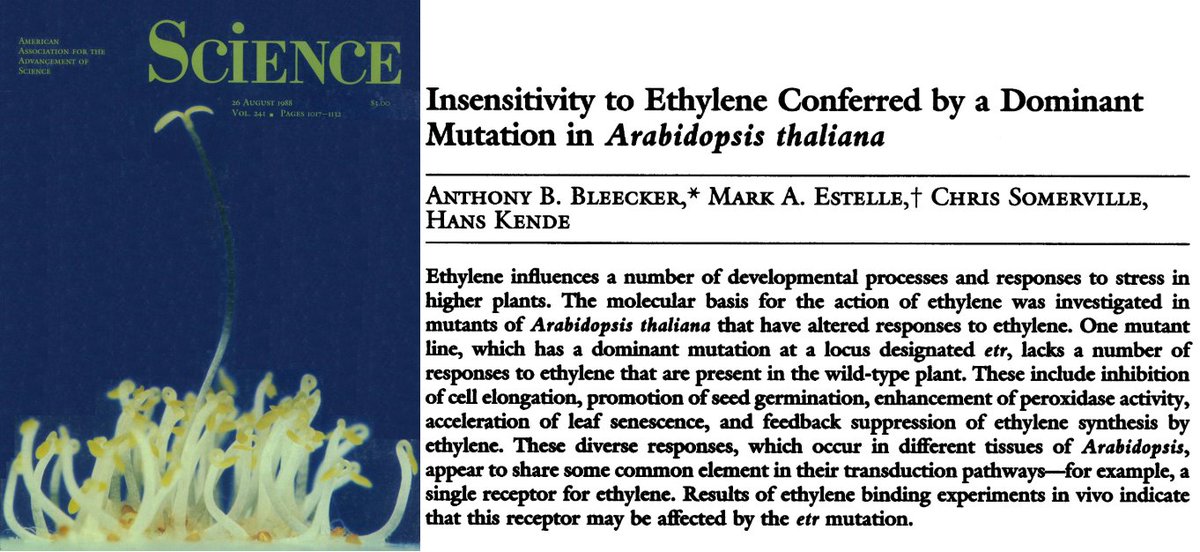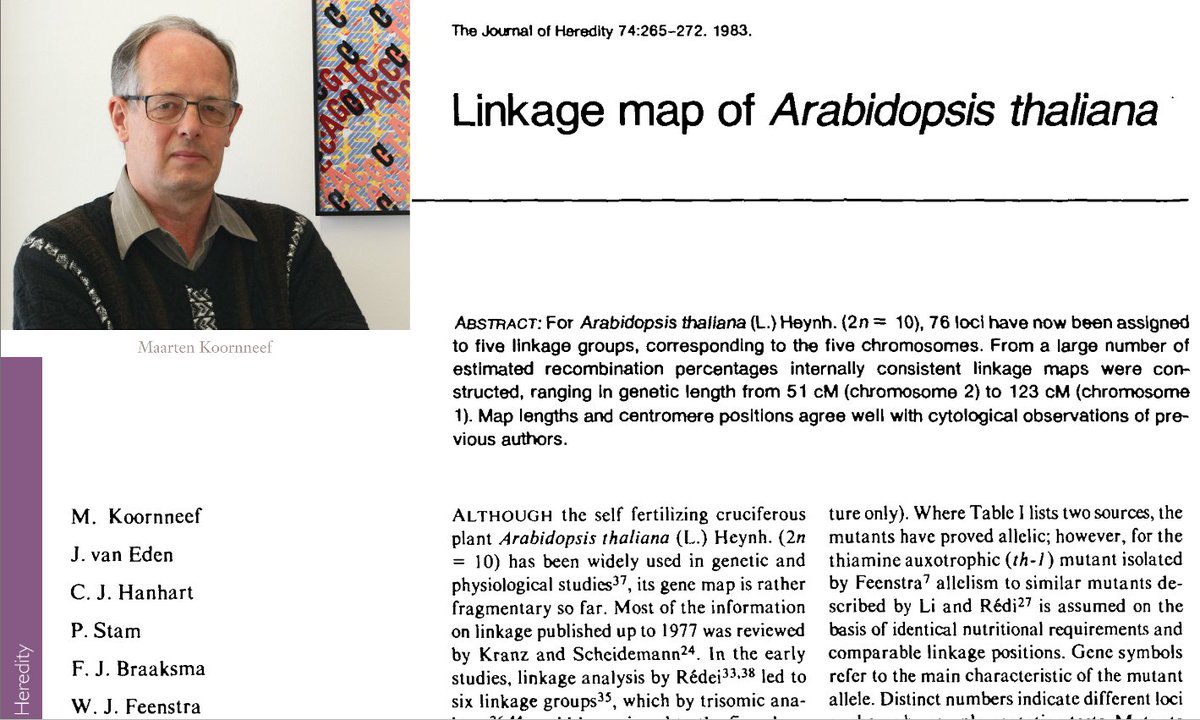#PlantScienceClassics #4: Arabidopsis thaliana suggested as model plant. In 1943 botanist Friedrich Laibach suggested A. thaliana as model organism for plant science. But the community was not ready yet - it took them another 40 years to see the light… doi.org/10.7287/peerj.… 

Laibach started work on A. thaliana in 1907, when, for his PhD-thesis, he determined the number of chromosomes in different plants he collected around his hometown Limburg, or @UniBonn, where he worked. A. thaliana only had 5 chromosomes, one of the fewest he found.
In his 1943 paper, Laibach points out the benefits of working with A. thaliana, such as easy to grow, small genome, short lifecycle, high seed yield, can be crossed & mutated…), pointing out how comparable it is to the ‘prime example’ of models: #Drosophila melanogaster.
This simplicity was one of the reason he took a liking to the weed. The other was the geographical distribution. It seemed to grow everywhere, and Laibach & his colleagues collected seeds from accessions everywhere they traveled, starting work on #NaturalVariation in 1940. 

This resulted in ‘The LAIBACH Standard Collection of Natural Races’ – the precursor to the modern @ABRC_OSU, @NascArabidopsis & @riken_en seed stock-centers. By 1943 Laibach felt that he & his team had established A. thaliana sufficiently to propose it as general plant model.
However, only very few pioneers shared Laibach’s vision at this point, among them John Langridge from the @UniofAdelaide, who even managed to publish a @Nature paper on A. thaliana already in 1955, & György Pál Rédei from Hungary. 

Rédei had fled his native Hungary to the US, escaping communism & #Lysenkoism, & carrying with him A. thaliana seeds he had received from Laibach. Establishing his own lab @Mizzou, he continued Laibach’s pioneering work, creating, among other things, the Col-0 & Ler plant lines. 

In 1975 he repeated Laibach’s call to adopt A. thaliana as model plant, but, like Laibach, with little success. In fact, because his peers believed so little in A. thaliana as a model, he was unable to obtain funding from the @NSF for decades. doi.org/10.1146/annure… 

It was only in the 1980s,with the advent of molecular biology, that everybody finally agreed that the plant sciences absolutely required a model to conduct modern research. A @ScienceMagazine paper by Elliot Meyerowitz announced the adoption of A. thaliana as plant model in 1985. 

The overwhelming success of this decision needs no pointing out, but you do have to wonder where we would be today, had more people shared Laibach or Rédei’s vision at the time these pioneers established A. thaliana as model plant in the 1970s, and even 1940s.
A quick addendum in reference to #PlantScienceClassics #2: Laibach’s student Erna Reinholz established x-ray mutagenesis of A. thaliana, curiously referencing Muller’s 1927 @ScienceMagazine paper, as well as a 1929 paper by Emmy Stein – but also ignoring her pioneering 1921 work. 

• • •
Missing some Tweet in this thread? You can try to
force a refresh




















